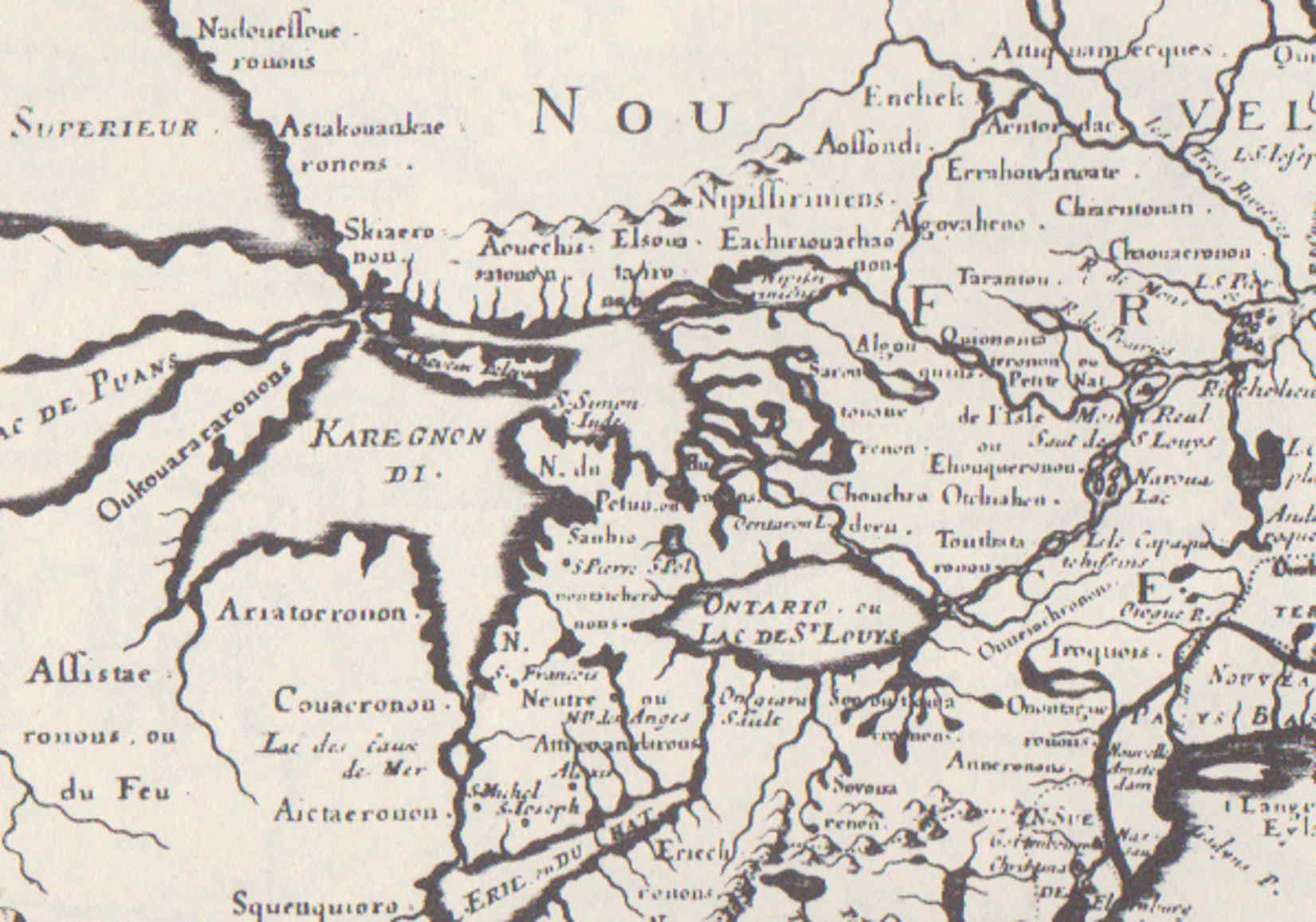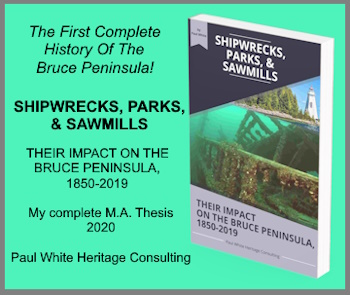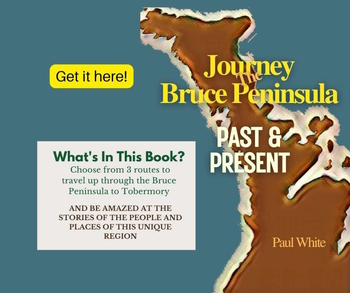Dyer's Bay Ontario: Began as a Lumbering Settlement
Dyer's Bay Ontario began as a lumbering settlement. Today it is a wonderful vacation retreat.
This past weekend I spent time touring my favourite area in all of Ontario, the Bruce Peninsula. After visiting some of the usual spots we headed to an area that I had not been to for a long time, Dyer's Bay.
Dyer's Bay is a small community built along the Georgian Bay shore on a narrow strip of land between the water and the high lands which shelter it from northerly and westerly winds.
The bay itself is broad in expanse and looking at a map of the peninsula it looks like a pointed instrument had burrowed into the peninsula to create the distinctness in shape of other eastern shoreline indentations such as Colpoy's Bay and Barrow Bay.
From The Bruce Beckons by Sherwood Fox's, we learn that Dyer's Bay may have been one of the earliest points on the Bruce Peninsula to be visited by French explorers.
A 1656 map by Sanson attempts to show that the northern portion of the peninsula was the territory of the Petun, or Tobacco, people and that there was also a French mission established in the region.

1656 Sanson Map
Four years later, a Jesuit named Father De Creux drew a more detailed map of the region and it appears on that map that the Mission of St. Simon and St. Jude was located at, or near, the present site of Dyer's Bay.
The 1725 map by de Lery shows a native community called Papinachois, or "Funny People", located at Dyer's Bay.
From this point in time until the late 19th century, not much is known about this area. It is probable that the bay provided shelter for vessels seeking refuge from stormy weather and that Indigenous hunting parties camped along the shoreline while they fished or travelled further inland to hunt for game animals. However, not all vessels who sought refuge in the bay survived the stormy wrath of Georgian Bay.
A testament to the loss of vessels and their cargoes can be seen as one drives into the village of Dyer’s Bay. A cairn stands there, mounted with a propeller salvaged from the nearby water.
As lumbermen moved up the Ottawa Valley into the French River area in quest of fresh stands of timber, the lumbering industry in Ontario became more centred in the Georgian Bay region.
Consequently, the forests of the Bruce Peninsula soon felt the axe of a forest products industry hungry to supply the needs of 19th century urban expansion and the accompanying growth in railway construction.
It is at this point in history that Dyer's Bay experienced European settlement in ernest.
One of the major sites of lumbering on the Bruce Peninsula occurred to the north and east of the site of the community of Dyer's Bay at "Ghost Lake," or as it is known today, Gillies Lake. Squared timber and logs were brought to the shoreline of Dyer’s Bay where they were floated in rafts and towed first to Collingwood for shipment to Toronto and other southern points.
In 1881, Captain Andrew Port told Horace Lymburner, who operated a sawmill at Big Bay, about the opportunity that existed on Dyer’s Bay where the waters of "Ghost Lake" emptied into Dyer's Bay.
In June 1881, Lymburner travelled with Captain Port aboard the steamer Jane Miller to the area. Lymburner agreed with Port's assessment of the economic potential of a sawmill in the area and immediately began to plan the mill site.
When it came time to transport the heavy equipment necessary to operate the mill, Lymburner called upon his friend Captain Port to bring in the equipment aboard the Jane Miller. There is an unfortunate irony in these events.
Captain Port did not live to see the completion of the mill, or the future success the Lymburners would have at the Dyer’s Bay mill. The next trip Port took aboard the Jane Miller after transporting the mill equipment was a disaster.
The vessel sank in Colpoys Bay, taking the Captain along with it, to a watery grave.
Today, much like the other communities on the peninsula which originated due to the lumbering industry, Dyer’s Bay is a resort town. Its economy depending largely on the influx of summer visitors who flock to the area each year to sail, fish, and relax amidst the natural beauty of the Bruce Peninsula.
A version of this article originally appeared in my Local History column in the Owen Sound Sun Times.
For more interesting stories about the history of the Bruce Peninsula check out my book, Journey the Bruce Peninsula Past & Present it makes a great companion as you travel this unique part of Canada's Great Lakes region.
Discover More About the Bruce Peninsula
Getting to the Bruce Peninsula is a relatively easy driving trip. Here are driving directions from three regions to the peninsula.
Bruce Peninsula Lumber History details the impact of the forest products industry on the development of the region.
Bruce Peninsula Lumbering provided the stimulus to develop and grow the pioneer economy on the newly settled Bruce Peninsula.
Bruce Peninsula Municipal Politics: No matter what the venue, or the issue, seldom is a popular decision made that suits everyone.
Bruce Peninsula Travel Routes were often a matter of debate because in the early years, land travel was virtually unattainable for settlers and lumbermen alike.
Bruce Peninsula winters could be difficult, especially in pioneer times when transportation connections were limited to only a few months each year.
Colpoys Bay Vista - Awesome! A short drive from either Wiarton or Owen Sound is one of the most magnificent views to be found in the province of Ontario!
Forest Products on the Bruce Peninsula contributed greatly to the growth and development of that region of the province of Ontario.
Gillies Lake: aka Ghost Lake has a mysterious past as its original name, Ghost Lake, implies.
Great Grey Owls on the Bruce Peninsula was a surprise discovery for ornithologists and others. Sadly, the story of their visit had an unfortunate conclusion.
Pioneer Campers: Hope Bay mostly considered the peninsula untamed wilderness and some of the locals were not about to disappoint them!
Pioneer Missionary James Atkey arrived on Colpoys Bay to minister to the native community near Oxenden until a treaty uprooted his parishioners.
Pioneer tourists first visited the Bruce Peninsula in the 1800s and the region continues as a great recreational and tourism destination today!
Pioneer Vacations on the Bruce Peninsula got an eerie start in the Hope Bay region of the peninsula.
Lighthouses Lighthouses were vital to Georgian Bay Sailing.
A Flowerpot Island cruise is not only entertaining, but it is also very educational as you will see things that you have never viewed before!
Travel the Bruce: Owen Sound to Wiarton A wonderful journey from Owen Sound to Wiarton.
Travel the Bruce: Wiarton to Tobermory Relaxing and historic journey.
Bruce Peninsula The Bruce Peninsula is a compelling place, with a rich history, to visit. Once you have traveled there, we guarantee that you will return, again and again!





